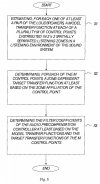I know the Audyssey flat curve has been blamed for a long time since Dr. Toole (and Dr. Olive too I think) mentioned that in their studies that most people prefer a tilt/smooth boosts to the low to low frequencies. I have to wonder though, that in their studies, did they allow for the well know Fletcher Munson curve so that they would have conducted their tests at reference level? If not, then I would argue that Audyssey's approach may not be all that wrong, because Audyssey did make it clear that they recommend the use of DEQ along with the reference or flat curve, when listening at below reference level.
Even before I tried putting a tilt on the bass, I never felt the reference curve sounded thin and bright because I always have DEQ on, unless I cranked the volume up to at least -15. Regardless, we have the App now, it isn't hard to implement a tilted target curve, though it needs to be done carefully, not just use the finger to draw the tilt. For it to really work well, I would use REW, do my analysis of the actual FR curve and then apply cuts to the bumps first, then elevate the subs level globally, along with very minor boosts at selected frequencies, and then check with REW again. In doing so, I would sacrifice efficiency but my subs are oversized for my room anyway so its not a problem.
To me that would be the same with Dirac or Anthem, if someone just tweak by shaping the target curve to implement Harman's, it would a hit and miss exercise and all I can say then is, good luck... That would mean people may like the end results because they just luck out, or they "heard" what they expected to hear, or a combination of both..


